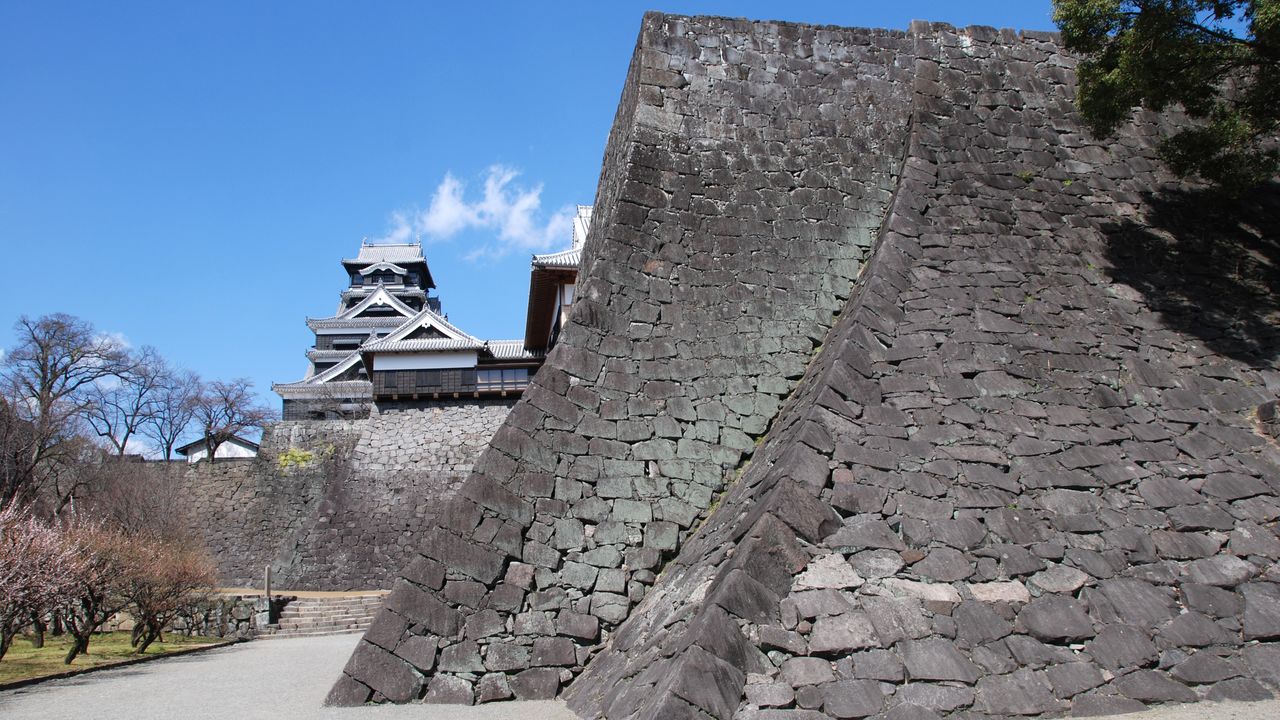
Japanese Castles’ Defensive Features
History Culture Architecture- English
- 日本語
- 简体字
- 繁體字
- Français
- Español
- العربية
- Русский
Nawabari, literally meaning “stretched rope,” is a term for the layout of a Japanese castle. This could be different depending on whether it was constructed on a mountain or flat terrain. For yamajiro or mountain castles, defensive structures could only be built on flat areas of the mountain, such as the summit or ridge. Ropes were therefore stretched out on stakes across those flat areas and used to plan the layout and size of the castle; this is where the word nawabari derives from.
It was used as a basis for constructing the dorui (earthen embankments), hori (moat), ishigaki (stone walls), and the entrance to the castle. Basically, it was the castle’s blueprint. Katō Kiyomasa, Kuroda Yoshitaka, and Tōdō Takatora were master castle builders, expert at making strong nawabari. All of them created formidable strongholds.
Kuruwa
This refers to the castle compounds, divided up based on the nawabari. The honmaru (main compound), ninomaru (second compound) and sannomaru (third compound) forming the center of the castle were surrounded by a further number of small and large kuruwa as a way to increase the castle’s defense capabilities.
The features had various names such as obi-kuruwa, from an obi or belt, as these long, narrow-style compounds were wrapped around the outer periphery of the castle. There was also koshi-kuruwa, a type built in tiers at yamajiro on the koshi (“waist”) or midsection of a mountain slope. These various kuruwa helped prevent enemies invading the honmaru. There were also kuruwa for storing provisions and stabling horses.
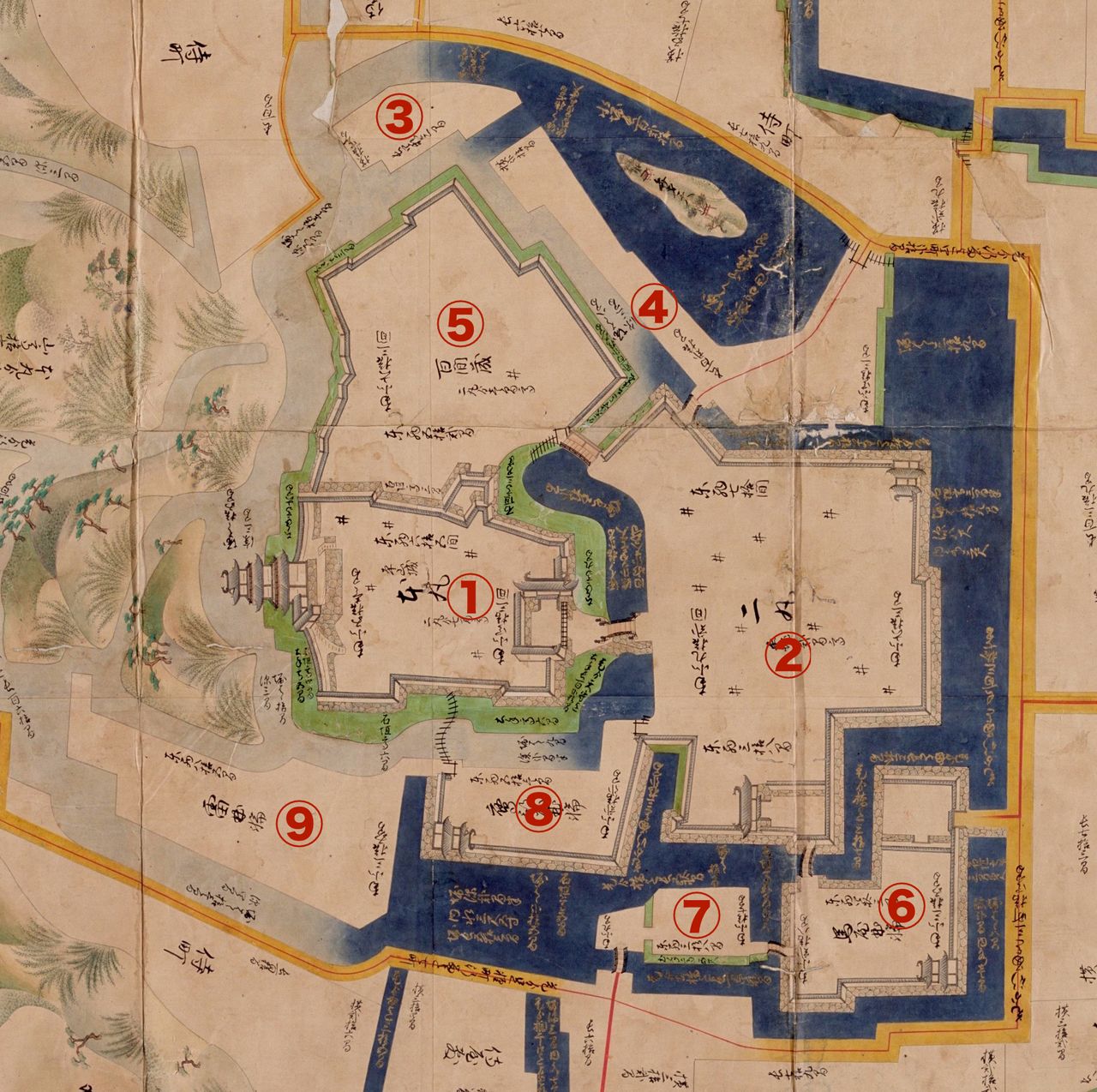
Odawara Castle in Kanagawa Prefecture as it appeared on the illustrated castle town map Shōhō shiro ezu drawn up in 1644. The number 1 indicates the honmaru, 2 the ninomaru, and 3 to 9 the other surrounding kuruwa. (Courtesy National Archives of Japan)
Hori and Dorui
The hori or moat was a key point for the defense around the kuruwa and, again, various types were constructed. Tatebori dry vertical moats dug into the mountain slopes were used to prevent the enemy from moving horizontally. A series of these moats running vertically up the slope was known as an unejō tatebori or furrowed dry moat.
Other types of moat included yagenbori, named because it was dug into a shallow V-shaped groove, resembling a yagen druggist’s mortar; the hakobori box-style moat, so-called because of its flat square bottom; kenukibori dug into a U-shape forming a round bottom; and shōjibori, where the moat was divided into grid-style sections, similar to the frame of a shoji screen.
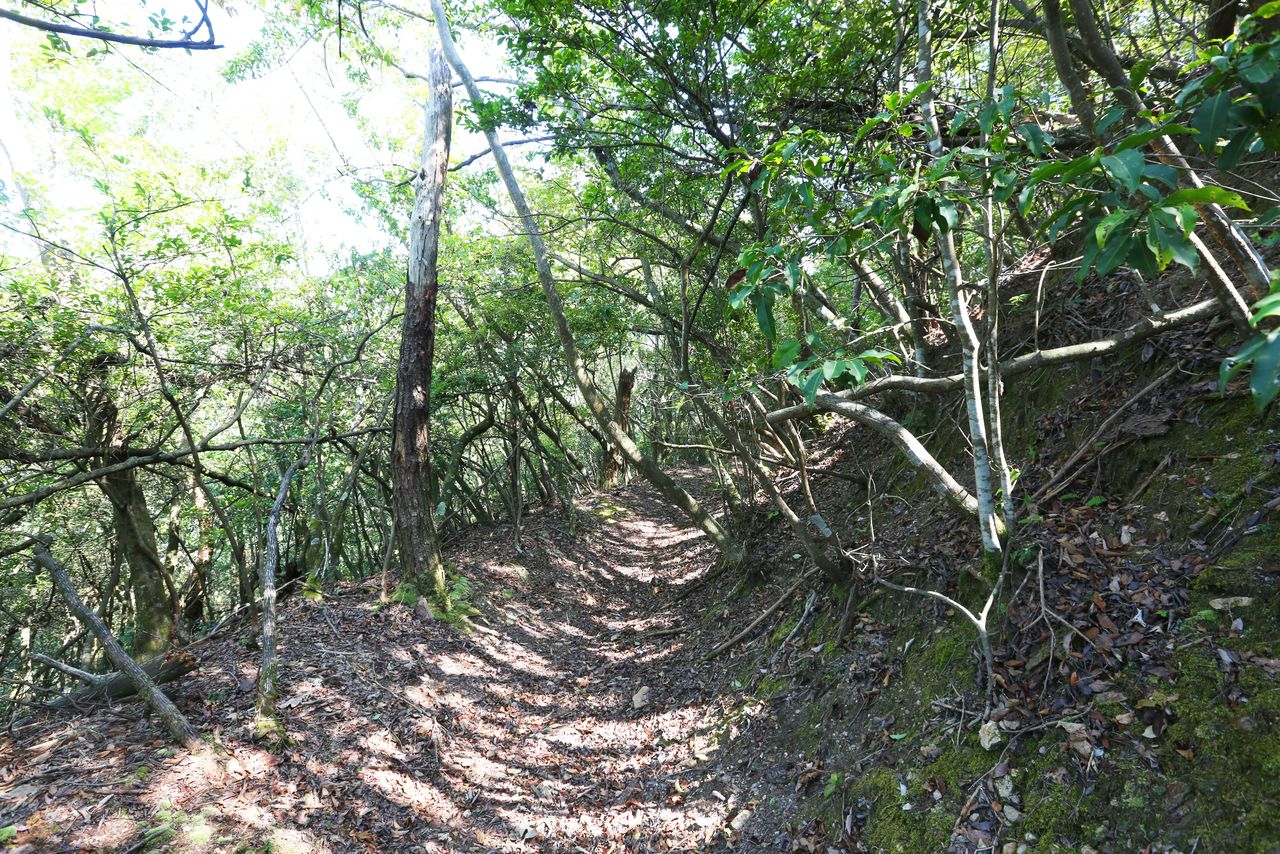
The remains of the tatebori at Sasanomaru Castle in Hyōgo Prefecture. (© Pixta)
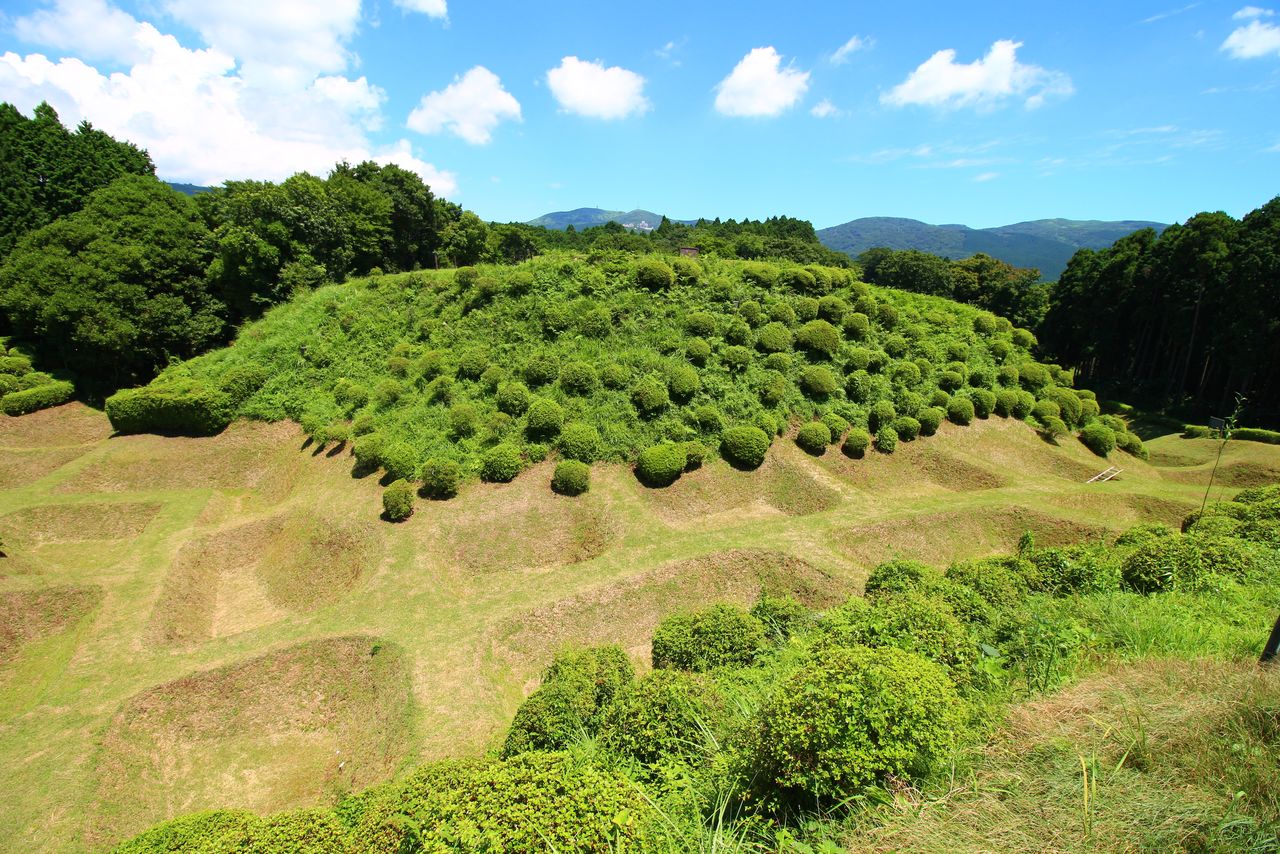
Yamanaka Castle in Shizuoka Prefecture has a famous grid-style dry moat known as a shōjibori. This was a Hōjō clan castle. (© Pixta)
The soil removed when digging a moat was piled up to create dorui earthen embankments. Enemies trapped in the moat would be attacked from above by soldiers standing on the dorui. Most of these embankments were dug at an angle of roughly 45 degrees. However, some were 60 degrees or steeper, closer to a type of wall known as a kirigishi (bluff).
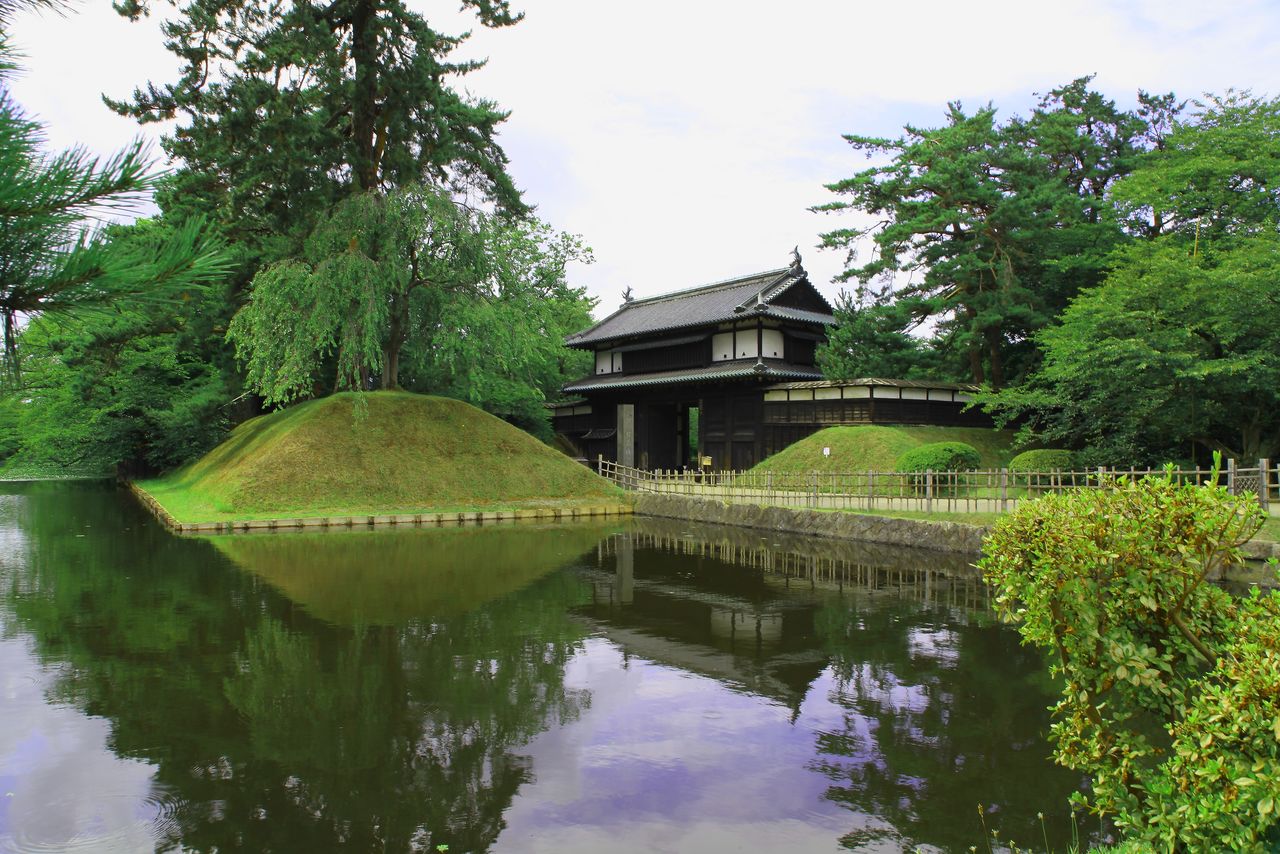
The dorui that still stands in the sannomaru of Hirosaki Castle in Aomori Prefecture. (© Pixta)
Ishigaki
The classic image many people have when thinking about a castle’s defensive structure is of its stone walls. However, in Japan, castles with ishigaki stone walls only really began to appear in the late Warring States period (1467–1568), when Oda Nobunaga and Toyotomi Hideyoshi started to build them, after which they became more widespread. During the main Warring States period, dorui were the main type of defensive structure used.
That being said, it was not a case of dorui initially being used and then an eventual shift toward use of ishigaki. Construction of castles during the Warring States period was often an urgent affair, so readily available local materials like earth were used, while in some areas stone walls were built.
From Nobunaga’s time onward, a more organized way of building castles was employed and, as the techniques for stacking stones evolved, the number of ishigaki increased.
Both the techniques for processing and stacking of stones changed with the times too. Nozurazumi was a technique of stacking stones in their natural state, with the non-uniform size of those stones providing excellent drainage.
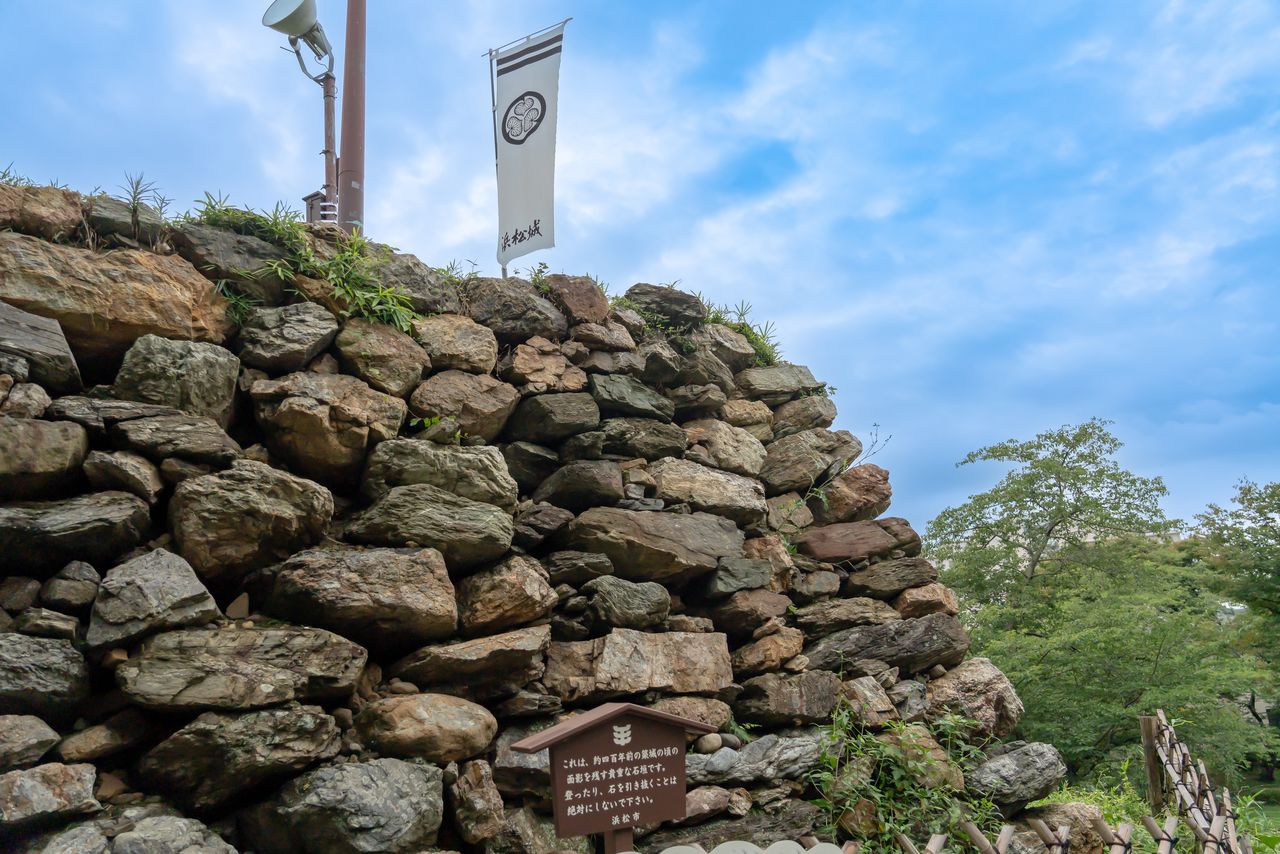
An ishigaki constructed using the nozurazumi method at Hamamatsu Castle. (© Pixta)
The next type of wall construction technique to be developed was uchikomi-hagi. It involved stacking stones with sharpened corners, so there were fewer gaps, and this made it a suitable technique for building ishigaki on steep slopes. Following the Battle of Sekigahara in 1600, this became the most common type of stone wall.
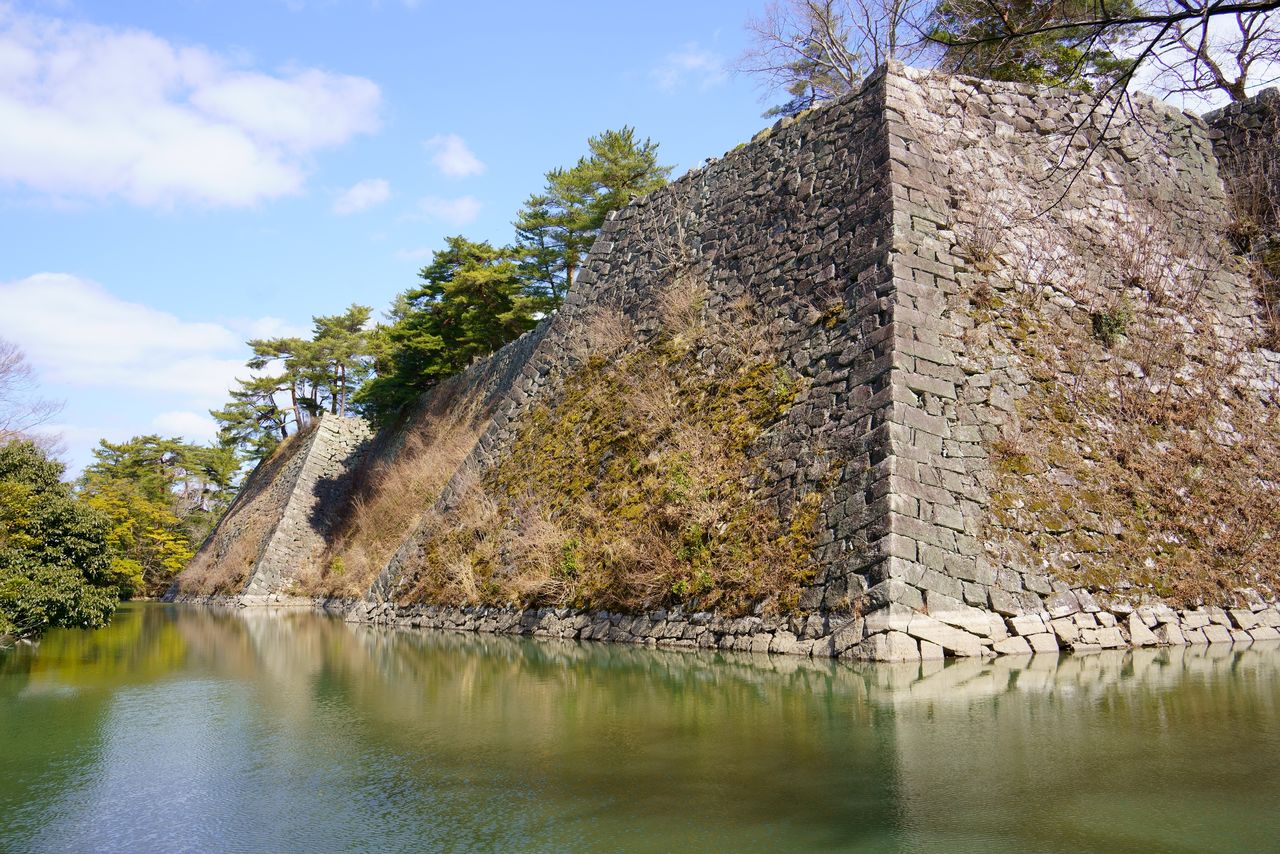
The towering ishigaki at Iga Ueno Castle is considered a masterpiece of uchikomi-hagi. (© Pixta)
An additional technique used was kirikomi-hagi, where stones were cut into cubes and then stacked. As there were almost no gaps with this form of stacking, it had separate drainage channels.
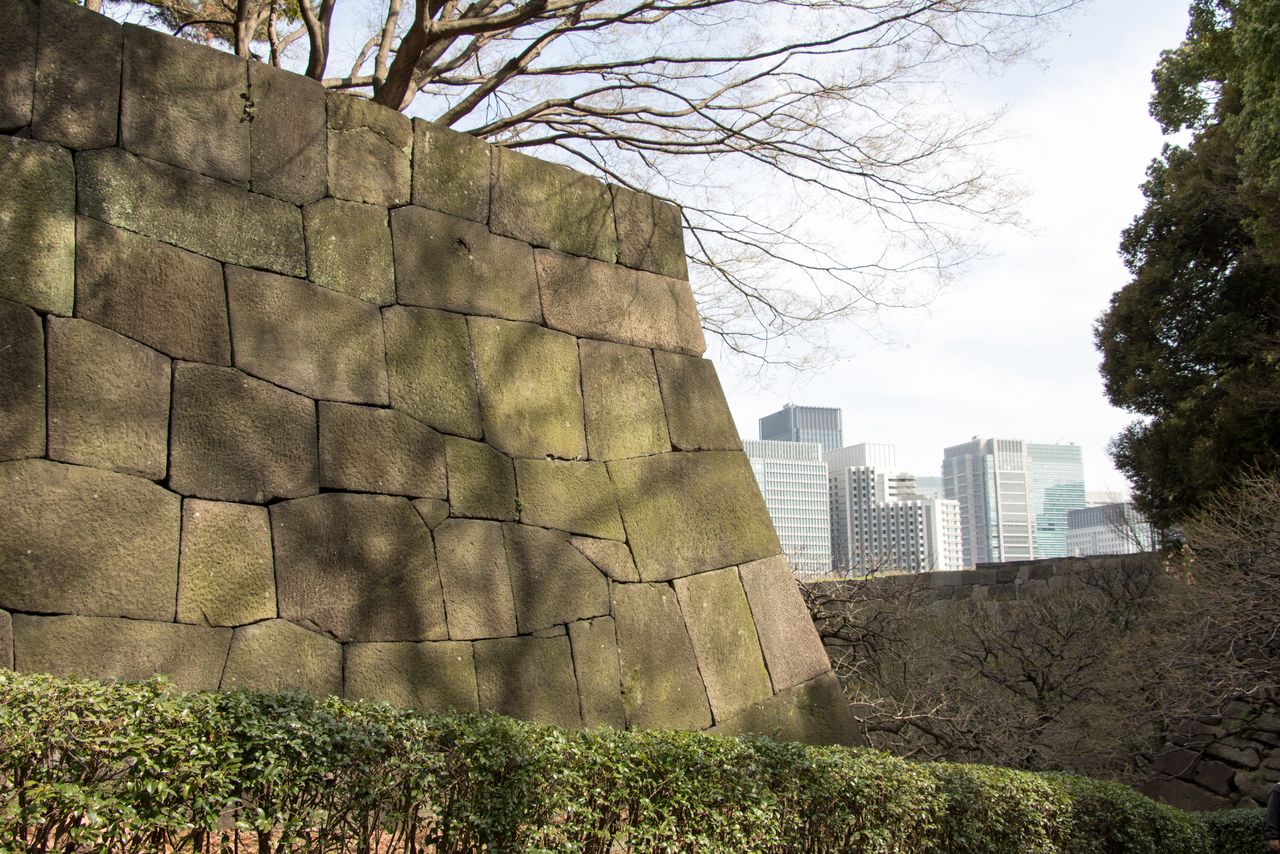
The ishigaki, constructed using the kirikomi-hagi technique, for the Kamibairinmon gate of the honmaru at Edo Castle. (© Pixta)
It should be noted that the three types of stacking technique above are first mentioned in literature from the mid-Edo period (1603–1868), not in the late Warring States period.
Koguchi
This was the castle entrance and the place most at risk from invasion by enemies. Originally, the naming koguchi meant “small entrance” using the Chinese character 小 (ko) for “small.” However, due to the danger presented from enemies, the first character was changed to 虎 (ko) or “tiger,” altering the meaning of koguchi to literally “tiger’s mouth,” indicating it was a dangerous place.
The koguchi was essentially a trap. Enemies would rush in through the entrance. The path itself though had bends constructed into it, slowing the attack to almost stop enemies in their tracks. Defenders would then shoot at them with guns or arrows through sama lookout windows in the surrounding walls and yagura turrets. This type of narrow, winding entrance with unaligned walls was known as a kuichigai-koguchi.
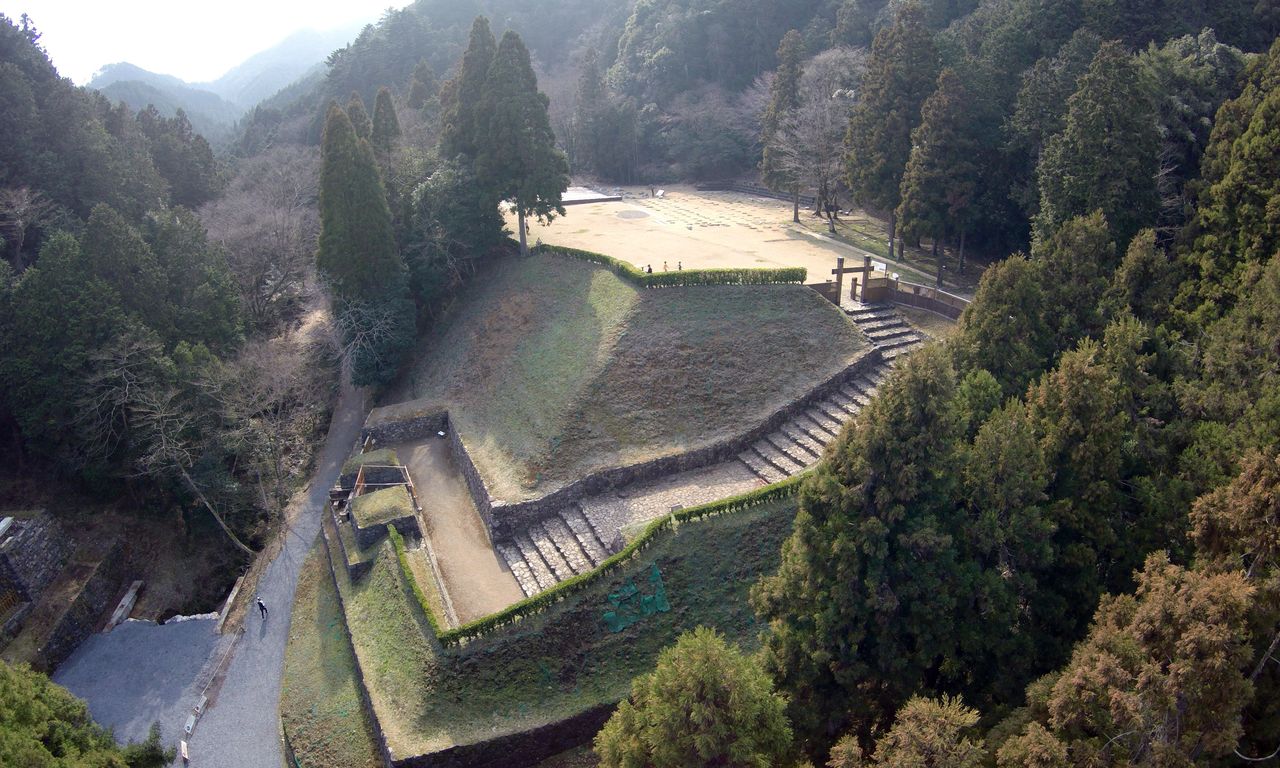
The kuichigai-koguchi at Hachiōji Castle in Tokyo. It curves all the way to the Goshuden (top center) and is on an incline too. (© Pixta)
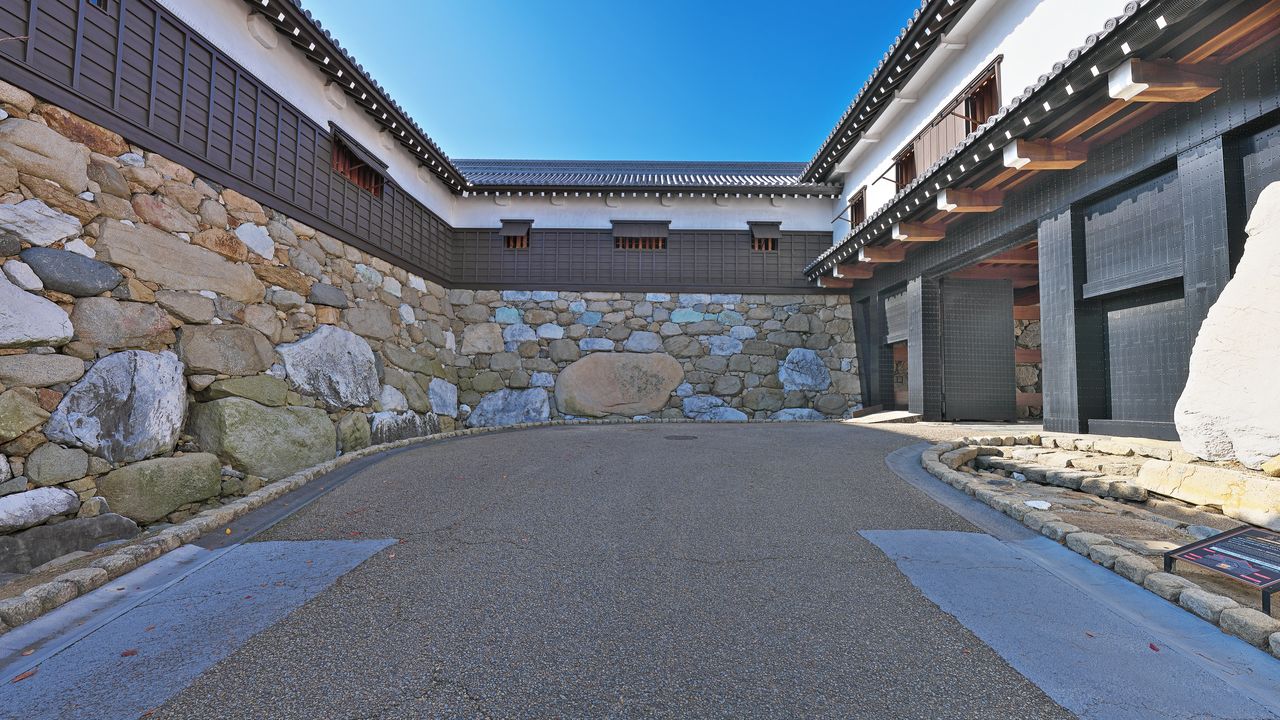
The masugata koguchi at Imabari Castle in Ehime Prefecture. This square enclosure was used to contain the enemy. (© Pixta)
This form of entrance evolved further into what is known as masugata koguchi, where a masugata square enclosure was deliberately left open to lure out the enemy. Walled on two sides, the third side was the entrance, and the fourth side was the gate leading toward the center of the castle. The enemy would naturally try to advance through the gate, but due to its narrowness, they would get backed up, becoming an easier target.
Mon and Yagura
The mon or gate at the koguchi was important too.
At many castles in Japan, a yaguramon turret gate was constructed, making it possible to shoot at enemies from the top of it. As this type of gate had strong defensive capabilities, it was often used for the ōtemon main gate or the front gate of the honmaru.
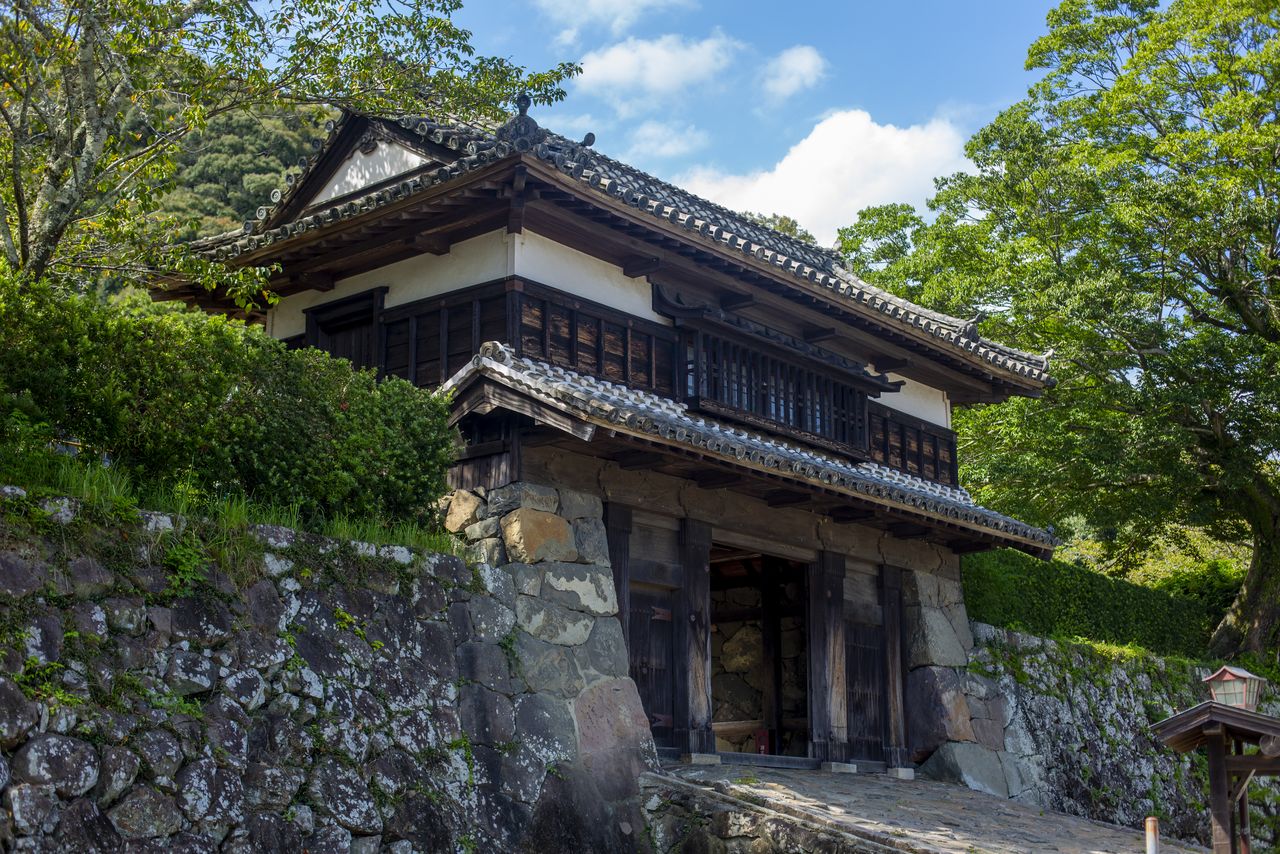
The yaguramon of the sannomaru at Saiki Castle, the ruins of which can be found in Ōita Prefecture. (© Pixta)
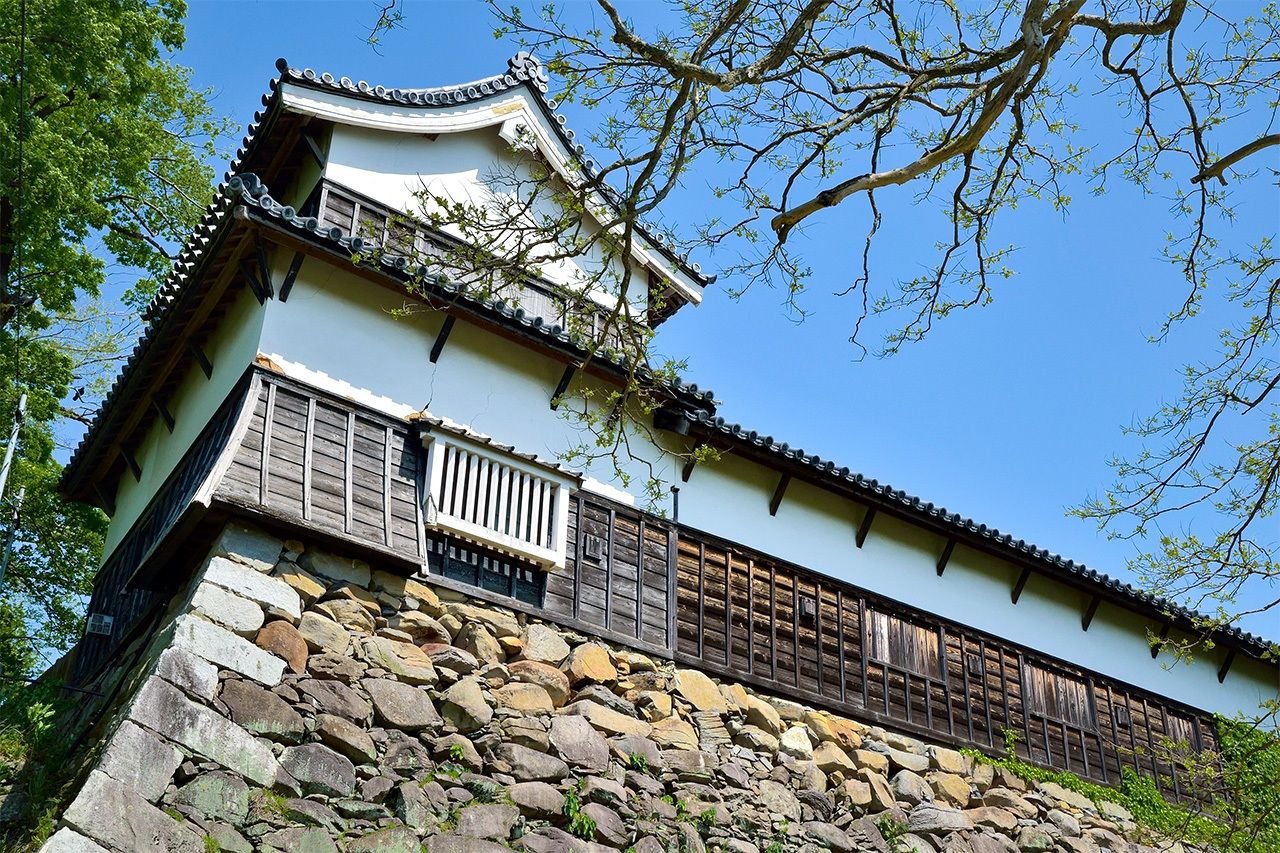
The tamon-yagura at Fukuoka Castle is a two-story turret (left) connected to a 54-meter nagaya longhouse. (© Pixta)
A long horizontal turret constructed above a gate is called a tamon-yagura. The naming comes from its first use at Tamon Castle in Nara, Nara Prefecture, built by the Warring States period daimyō Matsunaga Hisahide. The structure allowed a large number of soldiers to wait inside. The longer the turret though, the heavier it became, so as time progressed, more and more of these were built on ishigaki, developing into independent defensive structures, separate to the mon.
(Originally published in Japanese. Banner photo: Two styles of stone wall at Kumamoto Castle, with the wall in the foreground constructed by Katō Kiyomasa and the one in the background built during the time of the Hosokawa clan. While the Hosokawa clan were in power, a zigzag stacking technique known as sangizumi was developed, making it possible to stack stones on even steeper slopes. © Pixta.)